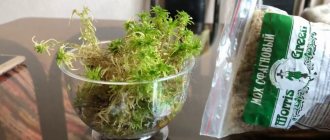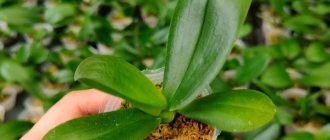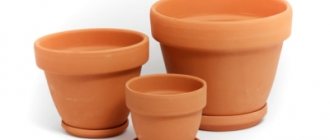Domestic representatives of the orchid family are quite capricious and picky about their care. The same persistent phalaenopsis is demanding not only on the microclimate, but also on the composition of the substrate. Significant changes in the latter can lead the flower to serious stress, and at the same time to its death.
Specialized soil and accompanying chemicals for orchids can cost serious financial expenses. But many professionals use activated carbon when growing flowers. The product is sold in any pharmacy, costs a penny and boasts its versatility. Let's find out in what scenarios activated carbon is used and how to use it correctly.
Substrate
Soil can be purchased at any flower shop. The substrate mixture is adjusted depending on the specific subspecies of orchid. But such decisions cost money, and if more than one flower is paid, then serious financial investments will be required.
Substrate is different from substrate. Not all manufacturers mix soil with proper quality. Sometimes you can run into downright bad decisions. Therefore, experienced flower growers advise to be more careful when choosing a manufacturer, or to prepare the substrate yourself.
Universal soil for orchids include:
- Pine bark.
- Peat moss.
- Root shoots of fern.
- Wood ash.
As a rule, there are no problems with bark, moss and ferns. You can find them in almost any forest belt or park area. It is better to use time-tested sphagnum moss as peat moss. But many people experience serious difficulties in finding wood ash, especially city residents.
Some novice gardeners plant a plant without it. But here you need to understand that wood ash plays almost a key role in the development of an orchid. The fact is that this component provides the necessary aeration, that is, it organizes the saturation of greenery with oxygen. If the process is disrupted or is completely absent, then the above-ground part of the flower will, at best, be sluggish, and at worst, dry out completely.
Experienced flower growers, in the absence of wood ash, advise using activated carbon. Some experts even recommend including it in the substrate in any case, pointing out the clear advantages of this approach.
In addition to organizing optimal aeration, activated carbon removes excess water, which has a beneficial effect on the quality of growth of the root system. In this case, it is less susceptible to fungal pathogens and rotting in general. As activated carbon dries, it nourishes the roots with moisture, which reduces the amount of watering.
When buying a young orchid, you should take into account that the store-bought substrate mostly consists of peat moss. As it grows, it will choke the roots of the plant, so the flower must be replanted.
Caring for the plant after transplantation
Water phalaenopsis after transplanting
only necessary if the drying of the plant during the preparatory stage was prolonged. If drying lasted no more than two hours, watering should be done no earlier than 3-4 days, depending on the season.
Feed the plant
should not be earlier than a month after the transplant - you can find out from our article.
The pot with the transplanted phalaenopsis is placed in a moderately lit place, avoiding open sunlight.
Self-preparation of substrate with activated carbon
Flower shops sell a wide variety of substrate variations, as well as its individual components. But to save money, you can mix the soil yourself. The effort and time spent are more than repaid with a healthy and pleasing orchid.
pine bark
You cannot remove the bark from a green tree. The best option is to find some fallen trunk and carefully scrape off the layers that have already begun to fall away on their own. If you use green bark, there is a risk of the flower becoming infected with pests. Although the latter are found on a dry formation, they are not in such volumes as on a healthy one.
In addition, fresh bark releases a sticky resin that is dangerous for orchids. It’s also not worth rushing to extremes: the rotten layer, as well as the rotten one, is susceptible to rotting, which will immediately affect the root system of the plant.
peat moss
Sphagnum moss can be found in shaded areas of forest belts and park areas. Peat should be collected from late spring until autumn. During this period, the moss is greenish in color and is rich in elements useful for the orchid’s root system.
Sphagnum can be collected for future use, because there will be no problems with storage. Dried peat will easily survive the winter somewhere warm and dark. For long-term storage, it is better to put it in the freezer. In any case, the moss will retain all its beneficial qualities.
Fern
It is not the leaves themselves that need to be collected, but the roots of the plant. The optimal time for harvesting fern is spring. During this period, the greenery has not yet blossomed, but the roots have already gained strength. As a last resort, you can collect the shoots in the fall, when the above-ground part is almost dry.
All products received from the street are subject to thorough sanitary processing. Literally every component can and, as a rule, contains undesirable microelements, as well as pest larvae.
Disinfection
After collecting all the necessary components, you need to disinfect them using industrial or folk remedies. The same flower shops have special antiseptic preparations. But experienced flower growers recommend adopting the classic method of disinfection without the use of aggressive chemicals.
Disinfection of components:
- Place all ingredients in glass or enamel containers.
- Pour boiled water into the container and place it in a shaded place without a draft.
- We wait 2-3 hours, after which we remove the components.
As a result of such thermal effects, not only debris, but also pests will float to the surface. Moreover, boiling water will destroy unwanted trace elements. After processing, the components must be thoroughly dried.
Activated carbon is added at the last stage. Otherwise, during disinfection, boiling water will destroy all its beneficial qualities.
Substrate mixing
The main volume of soil for most orchid species is the bark. Its share in the pot should be at least 50%. The remaining ingredients for the substrate are distributed in equal shares - 1/6 of the total mass. That is, the volume of activated carbon is 16-17%.
The latter must be laid evenly, adding it as other layers are filled. If coal is concentrated in one place, then it will be of little use. Some gardeners, when mixing soil, moisten it with each layer. This cannot be done with activated carbon. Watering is carried out after the substrate is completely formed.
Planting or replanting a phalaenopsis orchid
In order for orchids to grow correctly, they must be planted and replanted correctly. Therefore, action must be taken.
You can then put the orchids in packaging including your company name, this serves as a form of marketing and also turns the product into something more attractive. Typically, orchids have the opportunity to bloom once a year, and with each bloom the plant loses its vigor and beauty, and replanting must be done to maintain the functioning of the crop. At this stage, you need to remove the best seedlings from the plants that have already grown and fix them on new beds. It is recommended that replanting be carried out between 1 and 2 years after the first flowering.
Phalaenopsis, like other indoor plants, periodically needs replanting.
Reasons for transplant
there may be several:
- the size of the old container is too small for the flower;
- substrate salinization;
- interweaving of healthy and damaged roots;
It is not difficult to notice that the phalaenopsis pot has become small. In this case, the roots completely fill the space of the container.
, growing through drainage holes, and the substrate dries out too quickly.
Did you find out how to grow orchids? Comment and register your email for more tips! Regardless of the type of business you want to set up, it is very important to do the planning. Previously, coconut shells were considered waste or waste, but with the advancement of technical and scientific knowledge, this material has received several uses in industry and agriculture. Coconut fiber can be used in agricultural areas as a raw material for erosion control and repopulation of vegetation in degraded areas.
Aerial roots hang out of the pot, and a rosette with a large number of new leaves rises above the container, which is why it sometimes falls to one side.
Timely renewal of the substrate
– another key point in caring for phalaenopsis.
It is already used as a raw material for seedling, tree and commercial orchid substrates. It also has positive results in the potting mix of vegetables and orchids. This slow decomposition material protects the soil by reducing evaporation, increasing moisture retention, protecting and increasing soil microbial activity and therefore creating favorable conditions for plant development.
Success in moisture retention
Coconut fiber behaves like a sponge in many ways. As the sponge is introduced into the water and saturates it, allowing excess water to flow freely, there will come a time when the drainage stops. At this stage, the sponge will hold the maximum amount of water it can absorb, with almost all of its pores occupied by water in a state equivalent to the capacity of the fiber container. At this point, it is observed that the large pores do not contain water, but air. Squeezing the sponge between your hands will initially drain the water due to slight pressure, but each time you have to use more force to release it, to the point where you won't let it go again.
Even if the substrate looks good enough outwardly, it gradually loses many properties useful for phalaenopsis
– breathability, optimal acidity, balance of the mineral salts included in its composition.
For the normal functioning of the plant root system, the acidity of the substrate must be in the range of 5.5 – 6.5 pH
.
How to use in potted plants
However, its wet appearance will indicate that there is still some water retention.
This is the best advantage of using coconut fiber because the plant will last even during dry periods. Coconut fiber can be used to improve moisture retention in potted plants by simply mixing it into the planting soil. Every time the pot is irrigated, it absorbs moisture and holds water for the plants to absorb for much longer, thereby avoiding the plant from dehydrating due to water stress. At higher rates, the roots of phalaenopsis stop absorbing the iron the plant needs, which is why, over time, the orchid leaves acquire an unattractive yellow color and begin to fall off.
Acidity increases
, as a rule, from watering the plant with tap water, the pH of which is usually 7.2 - 7.4.
How to use potted orchids
This is a great way to reduce the risk of dehydration and retain more water in the soil.
Coconut fiber has been used as a substrate for commercial orchids. Being a lightweight product with high water retention capacity, it allows plant roots to grow longer. Being a low added value product, it values the entire package, attracting even more attention from the end consumer. To use it in a pot, simply place the fiber in the pot, plant the seedling, and line up the sides while supporting it. Regular watering with such water, as well as too much water, leads to another problem - the gradual accumulation and, ultimately, an excess of mineral salts in the substrate, which is why the roots of the plant cannot fully perform their functions, get burned and dry out or rot.
This can be noticed if the container in which the orchid grows is transparent.
Using fiber in planting orchids on trees
Coconut fiber can be used as a substrate when planting orchids and bromeliad trees.
Because it is light, porous and resilient, it allows water to be absorbed and retained in the plant's roots even during periods of drought, as it has greater resistance to moisture loss through evaporation. To use it, simply wrap the roots and rhizome of the plant in the tree with fiber and tie it with string until the plant is hard and ready! The crop will absorb the moisture that is trapped in the fiber and grow and develop in a healthy way, producing many flowers and roots. You can learn about this from the corresponding article.
Orchid propagation
Most orchids that have pseudobulbs reproduce well by division. This is the easiest method for beginners and does not require any specific skills or knowledge. However, the success of the procedure depends on the fulfillment of certain conditions.
If the flower has already outgrown its pot, then it is divided and one part is transferred to a new place of residence. At the same time, it is important to follow a number of recommendations, otherwise the plant will not take root or will even die from the dominance of parasites and harmful microorganisms.
Orchid propagation:
- Moisten the substrate generously with water.
- Carefully remove the flower by tilting the pot horizontally.
- Cut the orchid into two parts, leaving at least three pseudobulbs in each separate section.
- Treat the cut areas with activated carbon, after grinding it into powder.
- Plant the cut pieces in new pots.
Hands must be wearing gardening or medical gloves, and tools must be disinfected. This reduces the risk of flower infection by pathogenic microorganisms. In the absence of alcohol, you can pour boiling water over a knife or scalpel.
Orchid roots are extremely fragile, so you need to work with them very carefully. Places where the shoots are broken also need to be treated with activated carbon. Otherwise, they will begin to rot and eventually the plant will die.
Powdered activated carbon is a good antiseptic. The fact is that after treatment with the product, a protective film is formed at the cut site, preventing the penetration of harmful microorganisms into the flower.
Such disinfection reduces the risk of developing fungal and bacterial infections several times. Moreover, the film remains for a long time, sufficient for the plant to have time to heal its wounds, thereby minimizing the level of external threat.
Category: “Questions and answers”
Question No. 1. My orchid has rotted roots. I decided to transplant her. Before this, I cut off the roots, treated them with activated carbon and placed them in a greenhouse. After some time, I noticed that the roots began to rot further. I cut them again. But this time nothing helped either. In the end, the orchid had to be thrown away. Now I doubt that coal is as good for resuscitation as it is praised. Otherwise, why didn't he help?
In all likelihood, this situation is not just about coal. Often gardeners feel sorry for the plant by not cutting off the damaged part strongly enough. The leaf or root must be removed to the living tissue 1 cm above the lesion, otherwise the infection will persist in the tissues and spread further. In addition, when treating sections with activated carbon, it is important to remember that this is not a medicine, but a protective agent that forms a covering layer. To maximize the effect, it is better to crush the tablets as finely as possible, to the point of dust.
Remember that no coal will save you if, during further rehabilitation, the orchid finds itself in conditions of excessive humidity. The remaining pathogens will develop at tremendous speed and quickly attack the weakened plant.
Question No. 2. Is it possible to cure an orchid from root rot using activated carbon?
There is no cure, but it is possible to prevent the disease from spreading to healthy organs. Especially if the disease is in its early stages. To do this, the rotten roots of the orchid are cut off, sprinkled with charcoal powder and transplanted into a fresh, disinfected substrate.
Treatment of orchids with activated carbon
The plant reacts quite sharply to improper care. Beginning gardeners' orchids often get sick: the color of the fabric changes, mold appears, leaves fade, flower stalks fall off, etc. Any stress immediately affects the well-being of the plant.
Orchids will bloom and please the eye only if they are provided with an optimal microclimate: temperature, air humidity and proper watering.
Causes and consequences of improper care:
- Low room temperature and draft immediately affect the leaves. They begin to turn black, fade and fall off.
- Excessive watering can cause root loss. The shoots rot, undermining the health of the aboveground part of the plant.
- The dry environment takes its toll on the buds. The flower section dries up and sheds its young leaves.
If you ignore the symptoms and do not take appropriate measures in time, the flower can turn into a breeding ground for larvae and harmful bacteria, after which it simply dies. The only panacea for the problems described above is a full orchid transplant. Activated carbon is a key player in resuscitation.
Orchid transplant:
- Wet the soil with water at room temperature.
- Carefully remove the flower from the pot, trying not to damage the root system.
- If necessary, we get rid of old/rotten/dried shoots by cutting them to green tissue.
- We wait until the juice stops oozing from the wound.
- Sprinkle the cut surface with activated carbon (grind it first).
- We plant the flower in a new pot.
Treated areas should be dried naturally. Drafts or the same hair dryer can disrupt the healing procedure. Also, do not dry the plant in direct sunlight. High concentrations of ultraviolet radiation on tissues can cause unpleasant burns. In the warm season, drying will take about 30 minutes, while in winter it will take several hours.
There is no need to skimp on activated carbon. Excess powder will be washed off afterwards. While a lack of antiseptic will negatively affect the protection of problem areas. For greater effect, activated carbon can be ground into powder.
Under no circumstances should you use old soil in another pot, otherwise all the old problems in the form of parasites and infections will become new ones. During the adaptation period, the flower needs to find a secluded corner in a shaded place and not expose it to stress. Also, do not forget about drainage so that the water does not stagnate in the pot.
How to make soil for epiphytic orchids
Since the roots of such plants must be outside, the main purpose of the substrate is to keep the flower in an upright position and retain the required amount of moisture and allow air access to the roots.
- A mixture of bark (cones), coal, sphagnum moss and crushed fern roots is suitable. We take everything in equal proportions, mix and fill blocks or mesh baskets. In them, sphagnum is the main component - we do not forget about it, since moss not only retains moisture, but also allows you to track whether the plant is well watered.
- If the flower basket is in a room and not in a greenhouse, the ratio can be changed in favor of increasing the pine bark. We take 5 parts of it, two parts of moss, and add one part of charcoal.
But if our epiphyte grows in a pot, we don’t need to add sphagnum at all - there’s no need for extra moisture. Take 1 part of coal and 5 fir cones or pine bark. The soil will be dry and well ventilated.
Other beneficial properties of activated carbon
Young and still fragile plants, even with an abundance of fertilizers, are susceptible to dangerous infectious diseases. The root system and part of the above-ground stem take the main blow. To prevent infection, the surface of the substrate is sprinkled with powdered activated carbon: the root and aerial parts will be reliably protected from parasites.
When you need to root a shoot in a container of water, you should add one or two tablets of activated carbon. The product will ensure long-term preservation of water freshness, and the adaptation of the roots will noticeably improve. You can do the same with cut flowers that are given on holidays. It is enough to throw a few tablets of activated carbon into a vase and the bouquet will retain its presentability longer.
Very often, hard water causes the substrate in the pot to sour and become salty. 2-3 tablets immersed to a centimeter depth can activate the soil and restore balance. This problem is especially true for indoor plants that require a neutral pH level.











